звоните: +7 495 204-207-8
e-mail: art@quartagallery.ru
Recent posts
- Необычная судьба тверской художницы Наталии Пономаревой
- Жемчужина деревянной архитектуры русского севера
- Первая народная галерея в Льялово
- Online auction - a practical instruction. How to take part?
- История русской анимации и коллекционирование «истории» мультипликационных фильмов
- История в гравюрах и литографиях уникального печатного издания «Революционная Москва: Третьему конгрессу Коммунистического Интернационала». 1921
- Painting as a Gift
- What happened to frescoes of Kievskaya Metro Station?
Short History of the Russian Still Life
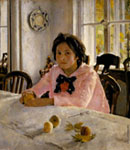
Amazing in its unlimited power of expression this seemingly most limited artistic genre, still life (or French “nature morte” meaning “dead nature”), born within the bowels of Dutch painting as "stilleven" or "motionless model" in the 17th century, was paving its way into the Russian art for quite a while.
The rudiments of the genre can already be observed in the Old Russian iconic painting, arising in the form of few objects on canvases dedicated to canonical subjects, which breathe life into them and even create the air of lightheartedness around severe religious scenes. However, in Russia “still life” was not considered attractive as a genre until the moment of its decline in Europe. It was common at that time to copy Dutch masters without any alterations. The first artist to discover the charm of the genre in the Russian painting was Ivan Khrutsky, a modestly-gifted painter oriented mostly on salon academic art. The official documents call his creative activity “the art of flowers and fruit”. From simple compositions made up of several objects Khrutsky very soon moved to large still lifes with a great variety of things and quite elaborate in structure.
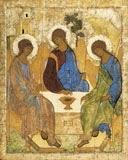
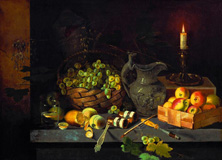

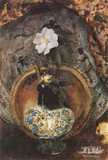
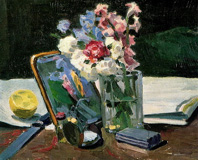
A. Rublev I. Khrutsky .V. Polenov M. Vrubel V. Borisov-Musatov
In the 19th century still life in Russia starts acquiring more meaningfulness on the canvases created by the artists of the democratic movement, such as Vasily Polenov and Pavel Fedotov, but in their works “still life” remained just a part of the composition. Among the rare still lifes by so-called “wanderers” (“peredvizhniki”) the central place was given to “bouquets”, for instance, “The bouquet of flowers” by Vasily Polenov (1880, the Abramtsevo Museum-estate); in the second half of 1880s similar bouquets appear in the works of Isaac Levitan. By the end of the 19th and the beginning of the 20th centuries Mikhail Vrubel and Victor Borisov-Musatov grant still life its own existence.
Yet the genuine interest to the genre comes along with the collections of French paintings brought into the country by major art patrons. It was impressionism and impressionist still life that boosted specific curiosity for the style and contributed the names of Russian artists to the world treasury. While Isaac Levitan still adhered to certain canons (isolated objects, a neutral background), the works of Valentin Serov and Konstantin Korovin reveal a distinctive new trend: an attempt to combine wild nature with the inanimate one both from the point of view of the subject and composition and by artistic means. Still life merges with interior, is brought out into the open air, filled with mood and emotions of a human. With its canvas “At the Tea-Table” (1888) painted at Polenov’s estate Korovin practically sets a new trend for the traditional genre removing its borders and blending it with portrait, landscape, interior and genre painting, filling still life with sensuality and vitality.
Another
significant representative of “Russian impressionism” who made a
considerable contribution into the promotion of the genre of still
life was Igor Grabar. The artist admitted being influenced by Claude
Monet and other impressionists (for instance, in his 1905 works
“Lilac and forget-me-nots” and “Chrysanthemums”), yet he was
striving to overcome the obvious narrowness of the style by
complicating the tasks and searching for new means of artistic
expression.
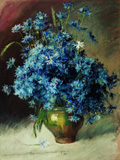
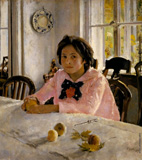
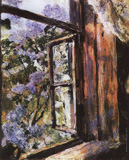
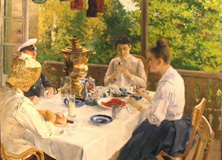
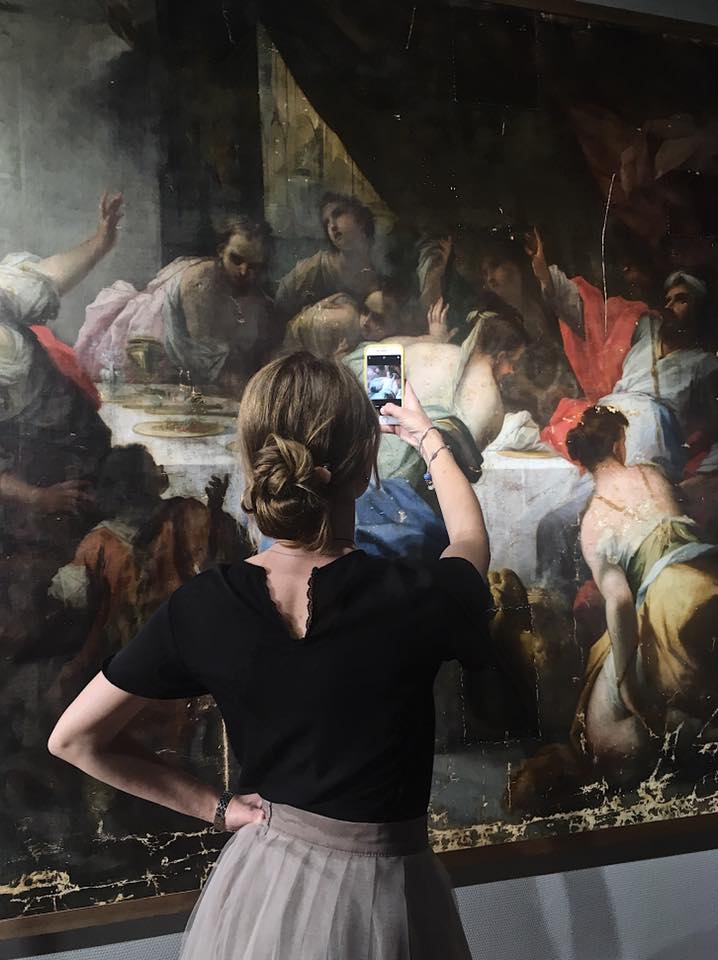
I. Levitan V. Serov V. Serov K. Korovin I. Grabar
At the beginning of the 20th century another unique artist reflects on the genre of “motionless models”, although his creations with their frugal set of objects, tense rhythm and stern composition can hardly be called “still” or “dead”. Kuzma Petrov-Vodkin conveys the philosophy of his time through color and unexpected perspective. Thorough analysis and experimental character of the structure of his still lifes are astonishingly combined with exquisite color schemes and amazing ingenuousness.
Meanwhile,
“The Knave of Diamonds” (“Bubnovy Valet”) enters the Russian
art arena, an association of artists who later turned into
distinguished masters of the Soviet art: Pyotr Konchalovsky, Ilya
Mashkov, Aristarkh Lentulov, Alexander Kuprin and Robert Falk.The
thing and thingness as opposed to spatiality constitute the general
principle of their art, thus putting still life into the center of
their creative activity.
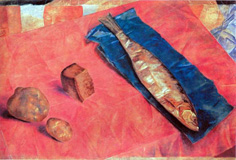

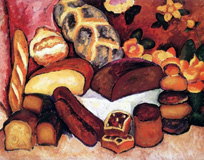
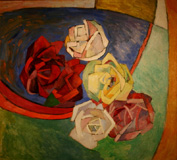
K.
Petrov-Vodkin
P. Konchalovsky
I. Mashkov
A. Lentulov
In
the second half of the 20th century
Vladimir Veisberg paints still lifes with bottles and plain objects,
trying to minimize the color and achieve lightful art space, to turn
art into a type of alchemy. And, of course, the genre was marked by
the presence of the master of “a cloth and a bucket of gouache”
charismatic Anatoly Zverev, who created his powerful expressive still
lifes from unimaginable rubbish combining all the achievements of his
predecessors in the most peculiar way.
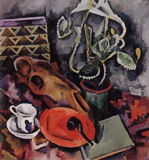
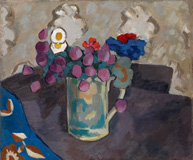
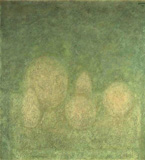
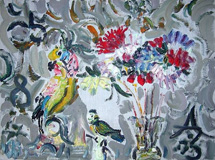
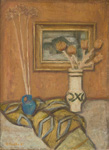
A.
Kuprin
R. Falk
V. Veisberg
A.
Zverev
T. Guseva
Even a slight touch upon the modest genre of “nature morte”, which originally was meant to reflect the world of things created by man and nature, reveals the stunning scale of its implementation in the world art history and in Russian art, in particular, and it undoubtedly manifests its limitless prospects for further development, which peculiar forms may be hard for us to divine.
Still lifes by Tamara Guseva, Inna Mednikova, Viktor Kotov, Nina Gabrielyan, Lev Rapoport, Andrey Kofman, Ekaterina Tikhonova and other Russian artists and photographers of second half of 20-th and 21st century on our website:
